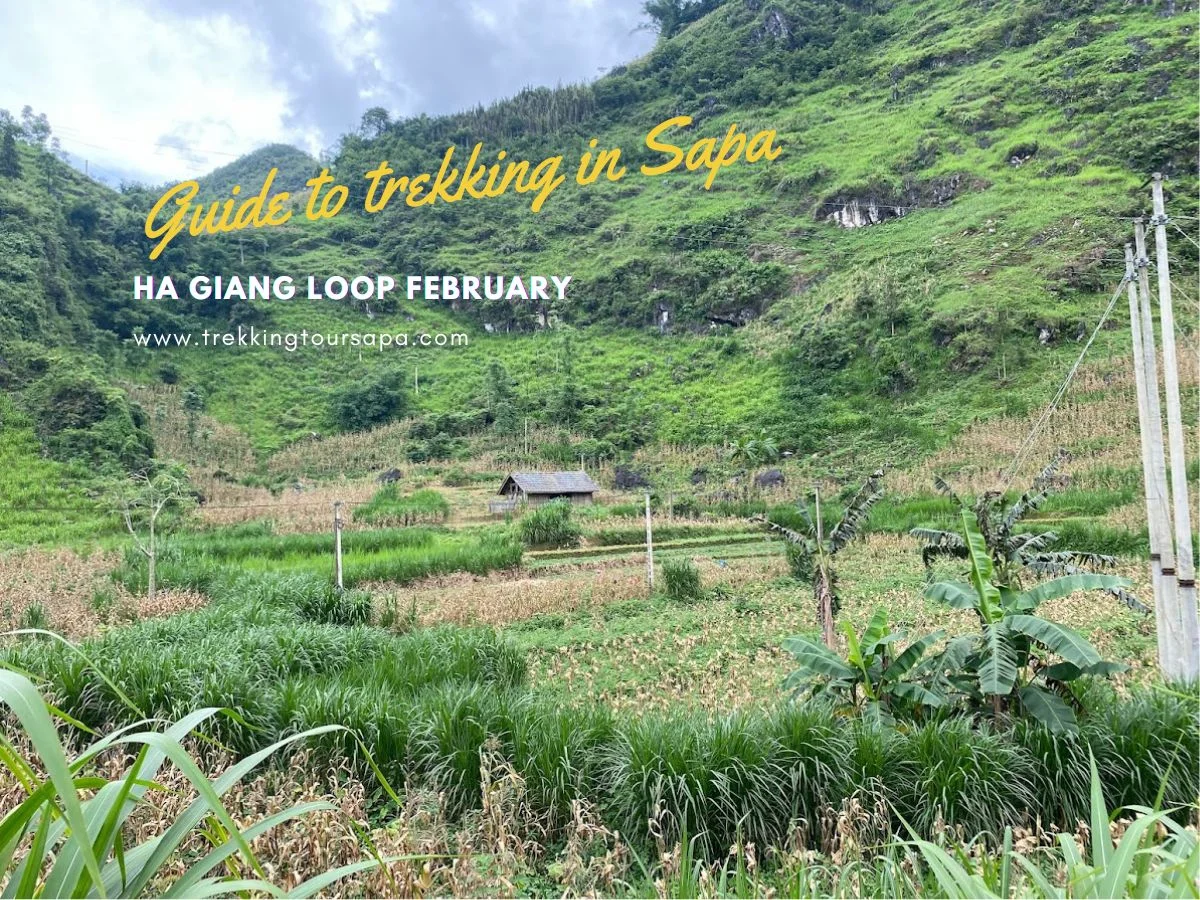If you are seeking an adventure that takes you off the beaten path, the Ha Giang Loop is the perfect destination for you. February is an ideal time to embark on this journey, as the weather is cooler and the crowds are thinner, allowing you to fully immerse yourself in the breathtaking landscapes and cultural experiences along the way. The Ha Giang Loop is a 300-kilometer route that takes you through some of the most remote and beautiful areas of Northern Vietnam, all the way to the Chinese border. In this travel guide, we will show you how to plan your itinerary, what to expect, and essential tips to make your February trip to the Ha Giang Loop an unforgettable experience.

Key Takeaways:
- February is an ideal time to explore the Ha Giang Loop due to cooler weather and fewer crowds.
- The Ha Giang Loop is a 300-kilometer route that takes you through remote and beautiful areas of Northern Vietnam, all the way to the Chinese border.
- This travel guide will provide tips on planning your itinerary, what to expect, and essential tips to make your February trip to the Ha Giang Loop unforgettable.
Table of Contents
ToggleWhy February is the Best Time to Explore the Ha Giang Loop
If you’re looking for an ideal time to explore the Ha Giang Loop, February is the perfect month to embark on this journey. One of the main reasons why February is such a great time to explore this area is due to the weather. The temperatures are moderate, and the skies are usually clear, making for comfortable and enjoyable travel conditions.

Another benefit of traveling to Ha Giang in February is that the landscape is at its most stunning during this time of the year. The rice paddies are alive with vibrant greens, and the mountains are dusted with a light layer of snow, creating a breathtaking contrast that’s simply stunning.
Additionally, February is a much quieter time to explore the Ha Giang Loop. You’ll have the chance to enjoy the natural beauty of the region without throngs of tourists. This peaceful atmosphere makes it easier to connect with the local communities, creating an enriching cultural experience that’s hard to forget.
Overall, February is a fantastic time to explore the Ha Giang Loop. With comfortable weather conditions, stunning landscapes, and a peaceful atmosphere, you’re sure to have a memorable and enjoyable experience.
Planning Your Ha Giang Loop Itinerary
Planning your Ha Giang Loop itinerary is crucial to have an unforgettable experience during your visit in February. With so many attractions to choose from, it can be overwhelming to decide what to include in your itinerary and what to leave out. Follow our tips and guidance to create the best itinerary to suit your preferences and interests.
Best Ha Giang Loop Itinerary

The best Ha Giang Loop itinerary for February should include the following must-visit attractions:
| Attractions | Description |
|---|---|
| Ma Pi Leng Pass | This stunning pass offers breathtaking views of the mountains and valleys, making it a must-visit attraction for photographers and nature lovers. |
| Dong Van Karst Plateau Geopark | This UNESCO-recognized geopark features unique geological formations and traditional ethnic villages, providing insight into the culture and history of the region. |
| Lung Cu Flag Tower | Located near the Chinese border, this tower offers panoramic views of the surrounding landscape and is a symbol of national sovereignty. |
| Hoang Su Phi Rice Terraces | These terraces boast stunning views in February, with their golden colors and lush greenery. They are a must-visit attraction for those seeking natural beauty. |
Other attractions worth considering include the Meo Vac Sunday Market, the Hmong Palace, and the Pu Loong Cave.
Recommended Routes
There are several routes that you can take along the Ha Giang Loop, each offering unique experiences and attractions. Here are some of the recommended routes to consider for your February itinerary:
- Dong Van Loop: This is the most popular route, taking you through Dong Van Karst Plateau Geopark, Meo Vac Valley, and Ma Pi Leng Pass.
- Hoang Su Phi Loop: This route takes you to the Hoang Su Phi Rice Terraces, where you can witness the stunning natural beauty of the region.
- Lung Cu Loop: This route takes you to the Lung Cu Flag Tower and offers opportunities to interact with different ethnic groups along the way.

Choose a route that best suits your interests and preferences, and make sure to take your time to explore the attractions along the way.
Getting Ready for the Ha Giang Loop Adventure
If you’re planning to experience the Ha Giang Loop in February, you’re in for an adventure of a lifetime. The loop is a challenging but rewarding journey that requires proper planning and preparation. Here are some tips to help you get ready for the ride:
Choosing your Ride
The most popular way to explore the Ha Giang Loop is on a motorbike. You have two options: renting a motorbike or joining a guided tour. If you choose to rent, make sure to rent from a reputable company and check the condition of the bike. A guided tour may be a good option if you’re not comfortable riding on your own. Besides, you won’t have to worry about getting lost or navigating the roads.

Packing Essentials
When packing for the trip, remember to pack light and bring only the essentials. Pack for different weather conditions, including warm clothes for the cold nights. Other must-pack items include a first aid kit, mosquito repellent, sunscreen, a helmet, and sturdy shoes.

Navigating the Ha Giang Loop
Before hitting the road, study the map and familiarize yourself with the route. The Ha Giang Loop is a challenging route with steep inclines and narrow, winding roads. Take your time and drive safely. Keep an eye out for other bikers, cars, and pedestrians.
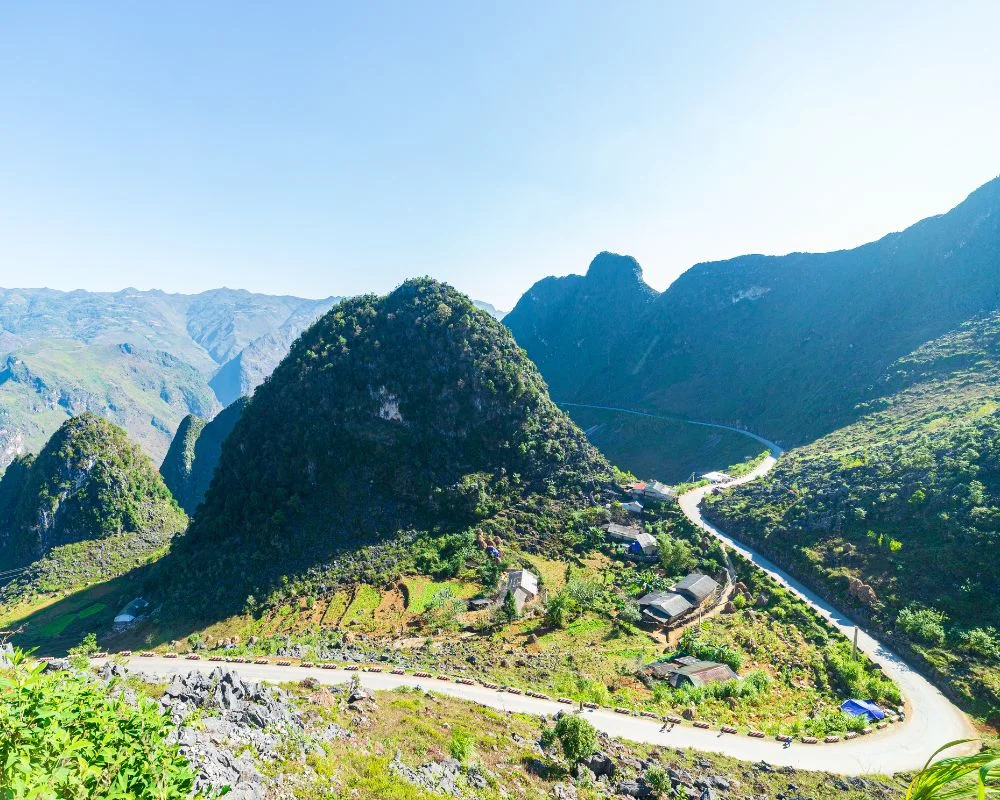
Respecting the Locals
When traveling through the Ha Giang Loop, you’ll encounter many ethnic minority communities. It’s essential to show respect and observe their customs and traditions. Dress modestly and ask for permission before taking photos or entering someone’s home.
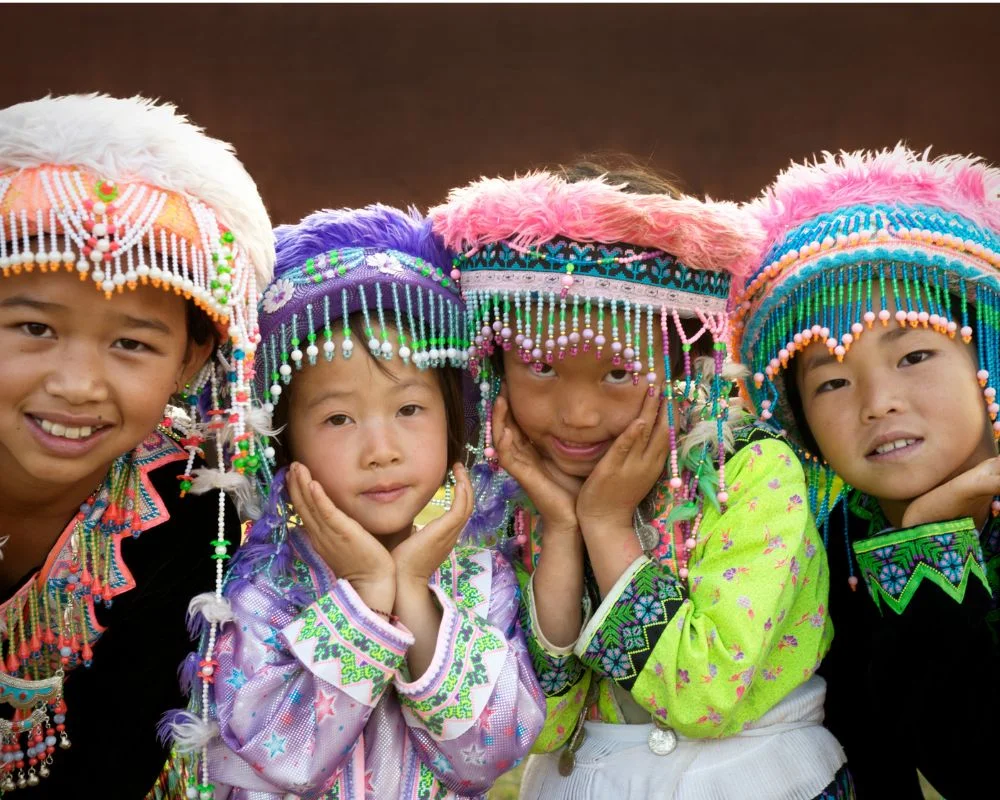
Follow these tips, and you’ll be well on your way to an unforgettable Ha Giang Loop adventure.
Day 1: Starting Your Ha Giang Loop Experience
As you begin your journey along the Ha Giang Loop in February, you’ll discover a world of stunning natural beauty, off-the-beaten-path destinations, and unique cultural encounters. Start your adventure by leaving the city of Ha Giang behind and heading towards the Quan Ba district. The first leg of your trip will take you through winding mountain roads and scenic valleys, providing plenty of opportunities to stop and take in the breathtaking landscapes.

One of the highlights of this day is encountering the Lung Tam village, famous for its traditional textile weaving. Here, you’ll have the chance to witness the intricate process of textile making and even purchase some of these exclusive handmade items as souvenirs.
Next, venture towards the stunning Twin Mountains, which offer a mesmerizing view of the surrounding valleys. From there, you can make your way to the Heaven’s Gate Pass, which promises an awe-inspiring panoramic vista of the entire region.
As the day draws to a close, head towards the peaceful village of Yen Minh, where you can find some comfortable guesthouses or homestays to rest for the night. Yen Minh is an excellent off-the-beaten-path destination offering a glimpse into the authentic local life of the region.
With a total distance of approximately 100 kilometers covered on the first day, this is just the beginning of your Ha Giang Loop adventure. Get ready for more breathtaking landscapes, unique cultural encounters, and thrilling experiences along the way.
Day 2: Exploring the Scenic Beauty of Ha Giang
As you begin the second day of your Ha Giang Loop adventure in February, get ready to witness some awe-inspiring natural landscapes that you won’t find anywhere else. This day of your journey will take you through some of the most beautiful sights and hidden gems, as you venture further into the heart of Ha Giang.
The off-the-beaten-path experience continues as you head towards the rural areas, where you’ll have the chance to witness the daily lives of ethnic minorities and their natural surroundings. Be prepared to be amazed by the breathtaking views of lush green rice terraces, deep valleys, and majestic mountains that stretch as far as the eye can see.
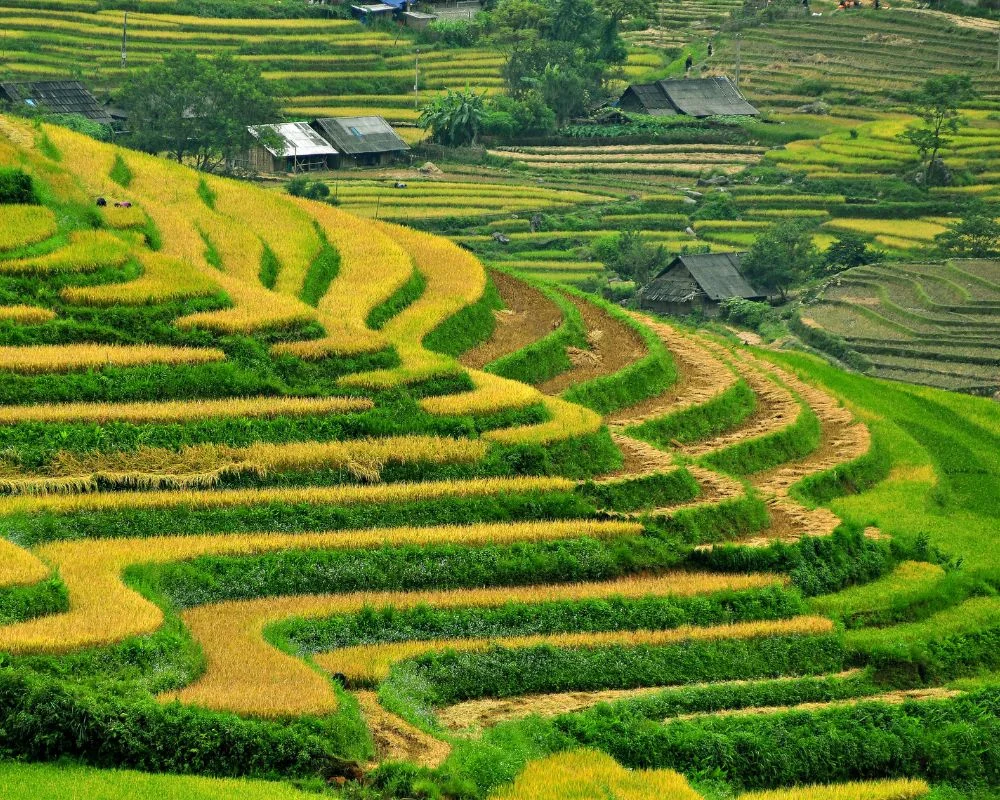
If you’re a fan of adventure sports, this is the perfect opportunity to indulge in activities like hiking, cycling, or even zip-lining through the stunning scenery. There are many trails available that wind through the hills and valleys, leading you to remote villages and picturesque waterfalls that are worth exploring. Ha Giang Loop in February offers the perfect weather conditions for outdoor activities, so don’t miss out on this chance for some exhilarating fun.
Another highlight of Day 2 is the chance to visit some fascinating local markets, where you can experience the hustle and bustle of rural trading. The markets are filled with colorful fresh produce, textiles, and crafts, which make for perfect gifts or souvenirs to take back home. These markets are also an excellent opportunity to interact with the locals and get a taste of their culture.
As the day comes to an end, make sure to find a cozy spot to relax and admire the stunning sunset over the mountains. You’ll discover that the serenity and tranquility of Ha Giang Loop in February are unmatched, with its unspoiled nature and peaceful surroundings that allow you to escape from the hustle and bustle of everyday life.
Day 3: Immersing Yourself in Local Culture
On the third day of your Ha Giang Loop adventure in February, you will have the opportunity to immerse yourself in the local culture and experience the daily life of ethnic minority communities. The region is home to several ethnic groups such as the Hmong, Tay, and Dao, each with their unique customs and traditions.
One of the highlights of this day is visiting the local markets, where you can witness the hustle and bustle of the trading activities and sample some delicious local snacks. The Dong Van Market is famous for its colorful textiles, handcrafted items, and fresh produce.
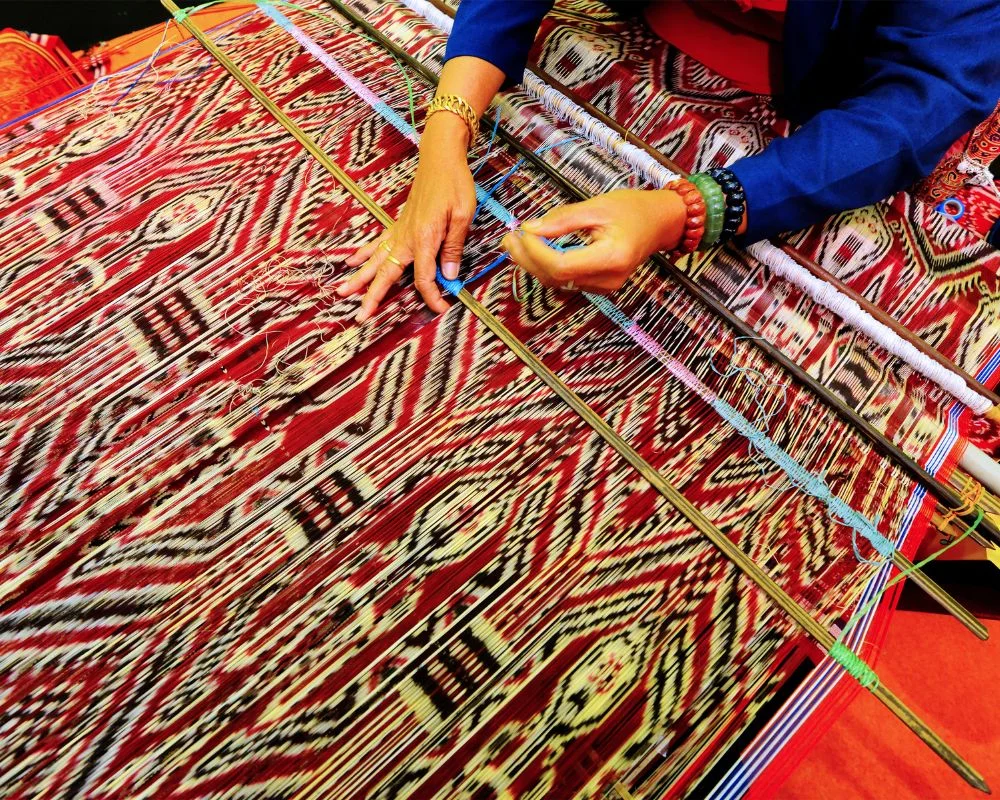
You can also visit the traditional houses of ethnic minorities, where you’ll learn about their way of living and gain insights into their beliefs and values. The H’mong King Palace in Dong Van is a remarkable example of H’mong architecture, offering a captivating glimpse into the H’mong culture.
For a more authentic cultural experience, you can participate in a homestay program, where you’ll be hosted by a local family and indulge in traditional meals. This is an excellent opportunity to interact with locals, learn their language, and gain a deeper understanding of their way of life.
Other attractions worth visiting on this day include the Lung Cu flag tower, the northernmost point of Vietnam, and the Ma Pi Leng Pass, which offers breathtaking panoramic views of the Nho Que River.
Tip:
When interacting with locals, it’s essential to respect their customs and avoid behaviors that may be offensive. Dress appropriately, ask for permission before taking pictures, and show gratitude for their hospitality.
In short, the third day of your Ha Giang Loop adventure in February is an excellent opportunity to explore the cultural diversity and experience the warmth and hospitality of the ethnic communities. Be sure to take your time, embrace the local way of life, and make lasting memories.
Day 4: Reaching the Chinese Border and Beyond
As you hit the road on the fourth day of your Ha Giang motorbike loop adventure in February, you will be amazed by the stunning scenery and tranquil surroundings. Make your way towards the northernmost point of Vietnam, where you will cross the border to China and behold the breathtaking views of Dong Van Karst Plateau Geopark.
Continue your journey towards the charming town of Meo Vac, where you can take a break and enjoy a warm bowl of pho or some delicious local snacks. Afterward, head to the Ma Pi Leng Pass, a legendary route renowned for its stunning views and cliffs. Take a break to admire the panorama of the Nho Que River below and capture some unforgettable photos.
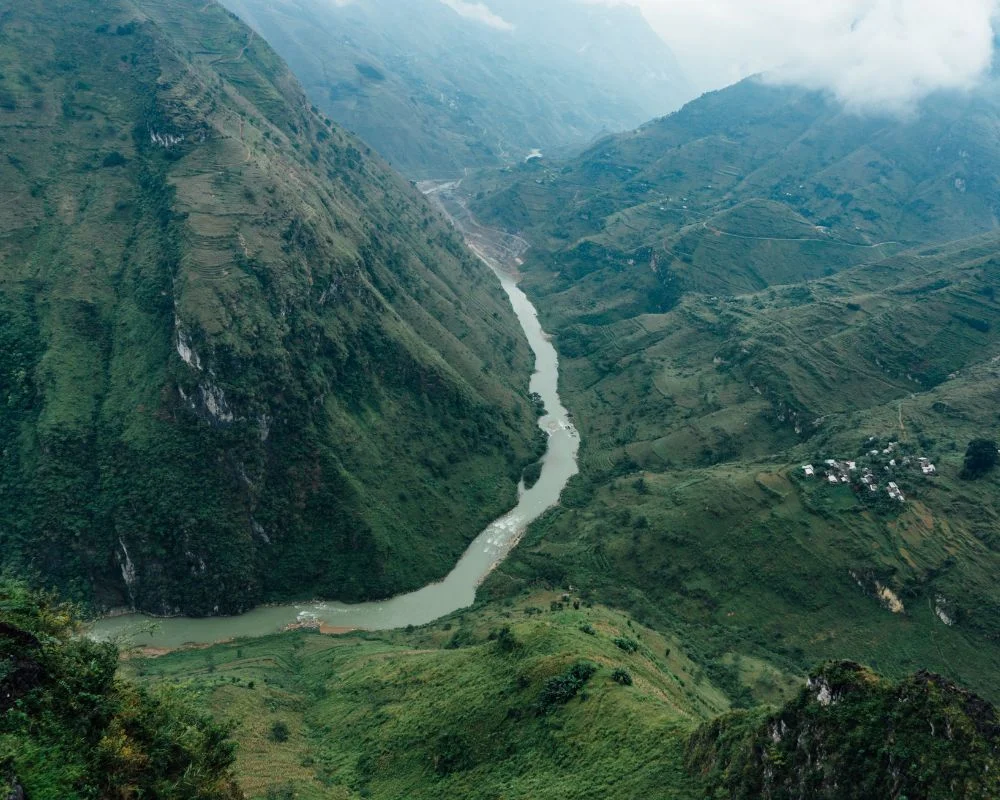
As you descend from the pass, stop by the H’mong King Palace, a historical site that preserves the culture and heritage of the Hmong people. Learn about the fascinating traditions and customs of the Hmong community and explore the beautiful architecture of the palace.
As your journey comes to an end, consider extending your trip to explore more of Ha Giang’s neighboring regions, such as the Ban Gioc Waterfall or the stunning rice terraces of Mu Cang Chai. With endless possibilities for adventure and discovery, your Ha Giang motorbike loop in February is sure to be a remarkable experience.
Safety Tips for the Ha Giang Loop Adventure
As you embark on your Ha Giang motorbike loop adventure in February, it is important to prioritize safety and take precautions to ensure a smooth and enjoyable journey. Here are some essential safety tips to keep in mind:
- Always wear a helmet and protective gear.
- Check the weather forecast and road conditions before setting out.
- Take breaks frequently to avoid fatigue and maintain focus while riding.
- Be aware of your surroundings and avoid risky maneuvers.
- Bring a first aid kit and have emergency contacts on hand.
- If you are not an experienced rider, consider hiring a guide or joining a guided tour.
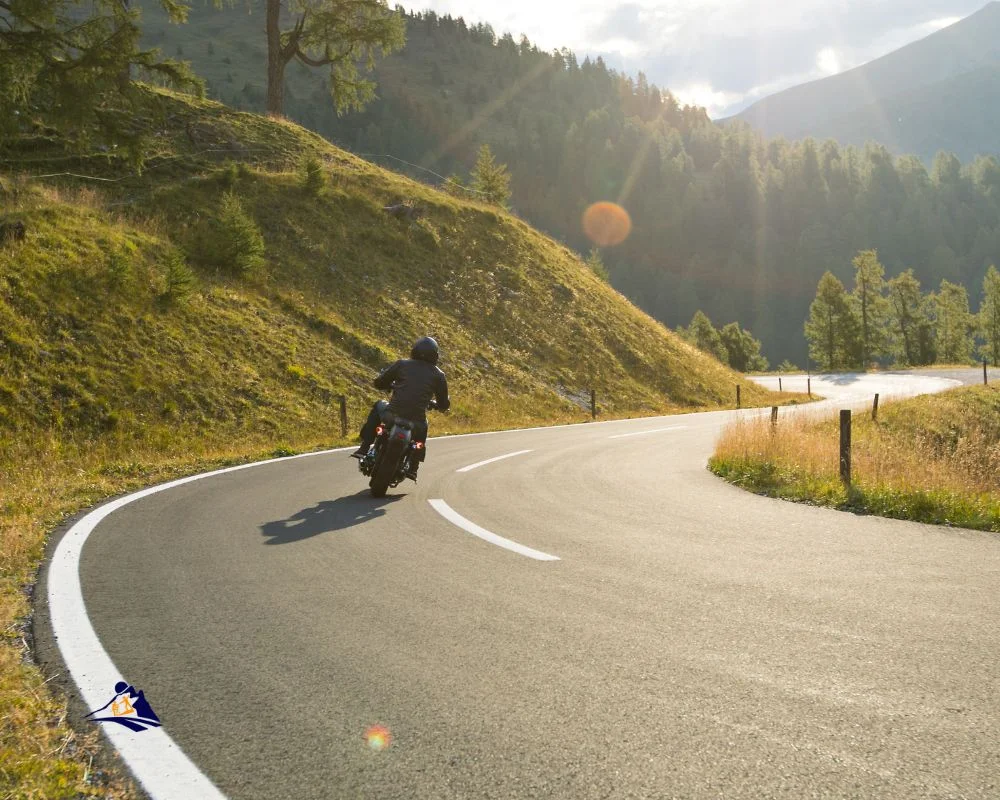
By following these safety tips and being mindful of your surroundings, you can ensure a safe and unforgettable Ha Giang motorbike loop adventure in February.
Ha Giang Loop: A Paradise for Adventure Seekers
If you’re an adventure seeker, the Ha Giang Loop in February is the perfect destination for you. With its rugged terrain and remote destinations, this loop is an ideal place to experience an authentic and exciting adventure in Northern Vietnam.
To fully immerse yourself in the thrill of the adventure, join a guided Ha Giang Loop tour. These tours offer a great way to explore the region with experienced guides who know the area well. They can help you navigate the undulating terrain and introduce you to locals, ensuring that you experience the best the region has to offer.
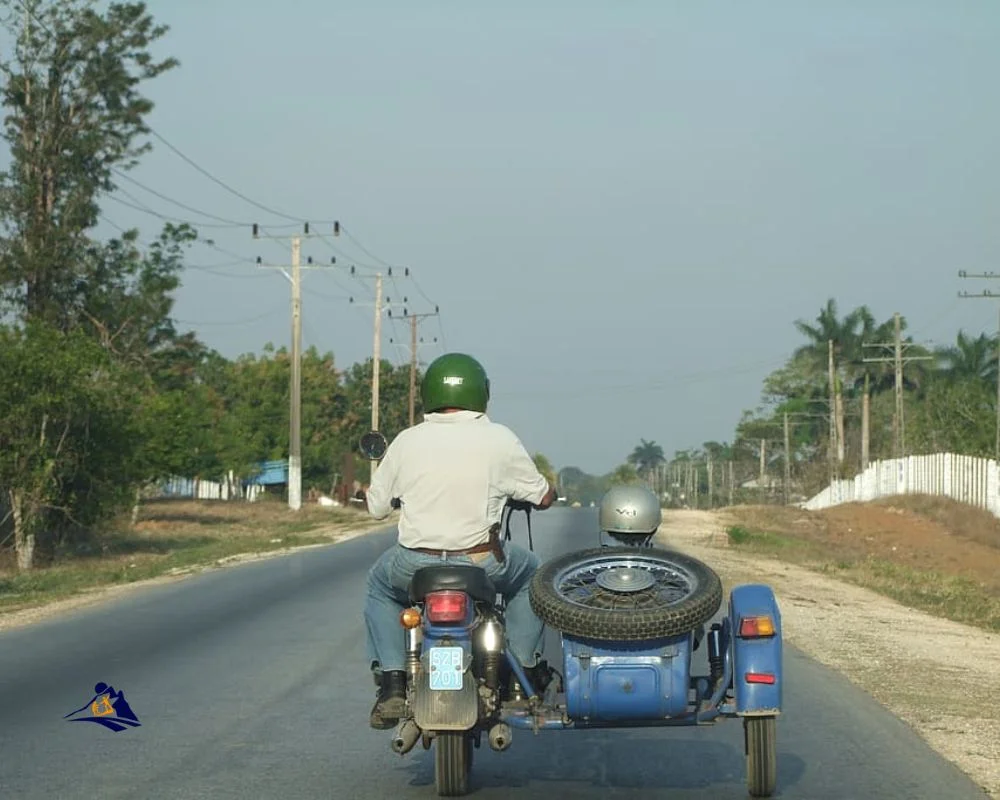
For those who prefer a more self-guided journey, renting a motorbike is a popular option. This allows you to explore the hidden gems along the route at your own pace, stopping wherever and whenever you want. The landscape is beautiful, and you’ll enjoy every moment of it.
Ha Giang is also a great location for trekking, rock climbing, and caving. The region’s picturesque landscape and topography make it an ideal spot for adrenaline-pumping activities. The best part is that the weather in February is perfect for these activities, with mild temperatures and clear skies.
If you’re looking for a unique and thrilling adventure, the Ha Giang Loop is the place to be. Whether you decide to join a tour or explore the region on your own, you’re sure to have a memorable experience.
Exploring Ha Giang’s Culinary Delights
If you’re a foodie, you’re in for a treat as you embark on the Ha Giang Loop adventure in February. The region is known for its diverse and flavorful cuisine, influenced by the ethnic cultures that inhabit the area. Here are some of the top culinary attractions worth exploring:
Food Markets
One of the best ways to sample the local cuisine is by visiting the vibrant food markets scattered throughout Ha Giang. The Dong Van Market, for example, is famous for its selection of grilled meats, steamed dumplings, and noodle soups. The Meo Vac Market is another must-visit destination for foodies, where you can indulge in a variety of exotic dishes and fresh produce.
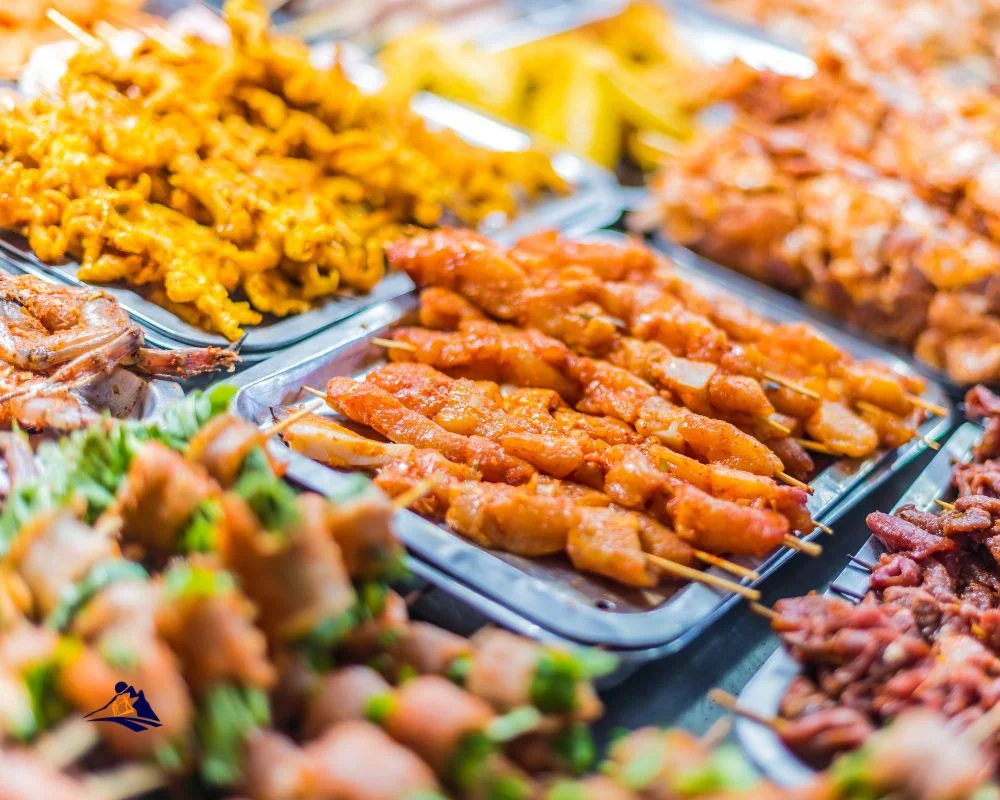
Thang Co
A traditional dish that originates from the Hmong people, Thang Co is a hearty soup made with horse meat, organs, and bones, and flavored with ginger, lemongrass, and chili. While it may sound unusual, Thang Co is a beloved delicacy in Ha Giang, especially during the winter months.
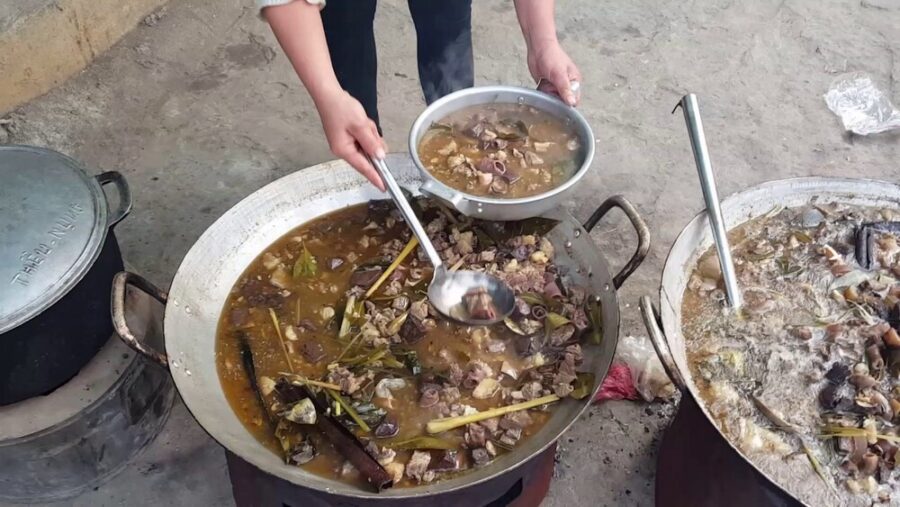
Banh Xeo
Banh Xeo, also known as Vietnamese crepe, is a crispy, savory pancake made with rice flour, turmeric, and coconut milk, and filled with a variety of ingredients such as pork, shrimp, bean sprouts, and onions. It’s a popular street food snack that can be found in many cities in Vietnam, but Ha Giang’s version is especially delicious.
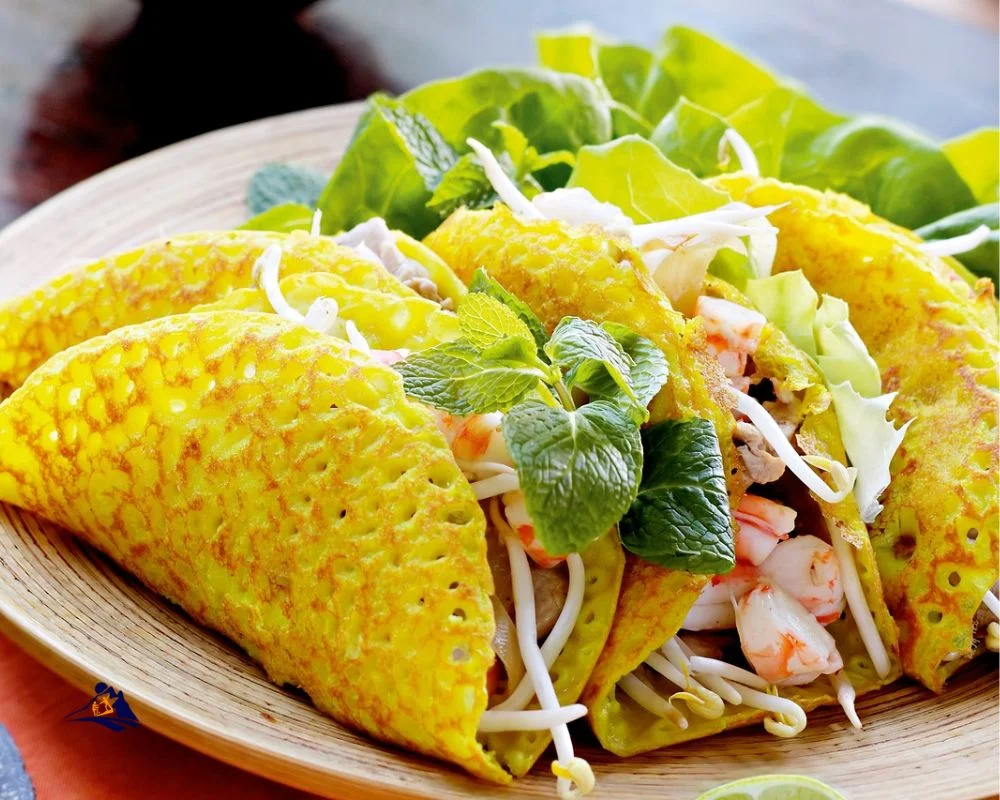
Grilled Sausage
Another must-try culinary attraction in Ha Giang is the grilled sausage, known as Nem Chua. This specialty is made with minced pork, garlic, chili, and rice paper, and then grilled over charcoal for a smoky flavor. It’s a perfect snack to enjoy on the road as you explore the stunning landscapes of the Ha Giang Loop.
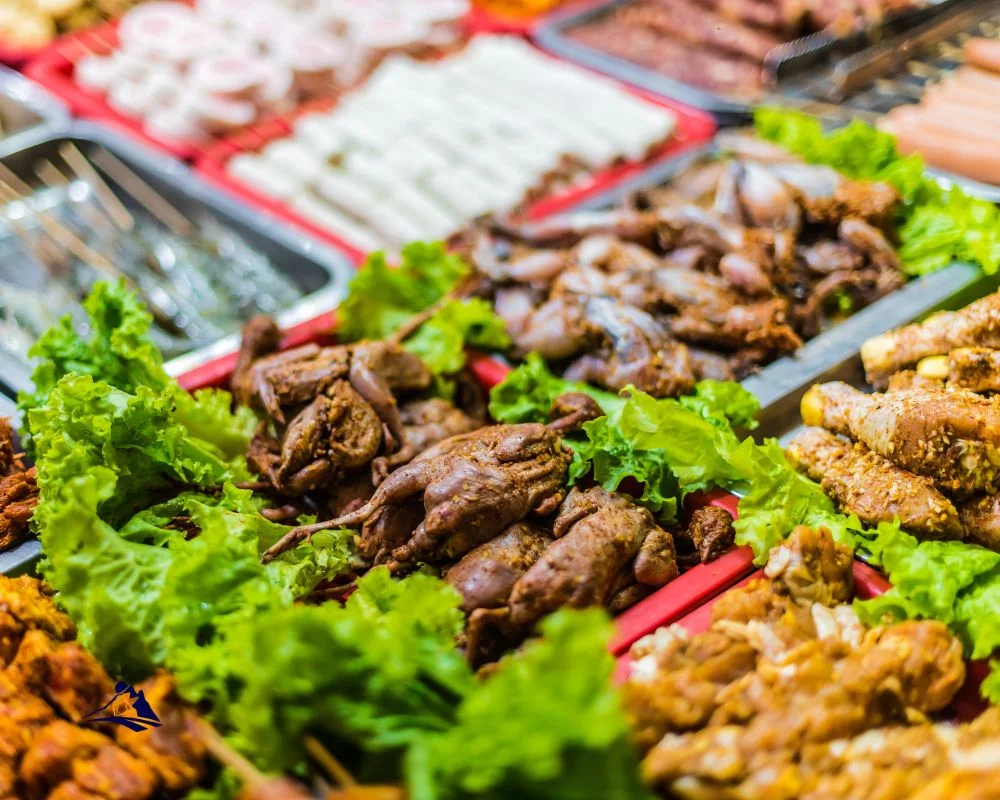
Whether you’re an adventurous foodie or a curious traveler, Ha Giang’s culinary scene will surely satisfy your taste buds. Don’t forget to try these local delicacies during your February visit!
Ha Giang Loop: Captivating Photography Opportunities
If you’re a photography enthusiast, you’re in for a treat when exploring the Ha Giang Loop in February. This scenic region is a paradise for capturing stunning landscapes, ethnic cultures, and vibrant markets through your lens. Here are some of the most captivating photography opportunities you can’t afford to miss:
- Ma Pi Leng Pass: This breathtaking mountain pass offers panoramic views of the Nho Que River and the surrounding limestone cliffs. The winding road and the dramatic scenery make for some of the most epic shots of your lifetime.
- Thon Tha Village: This remote village is home to the Tay ethnic minority, who are known for their traditional stilt houses and colorful garments. The village is surrounded by verdant rice terraces and a tranquil lake, making it a perfect spot for capturing authentic rural life.
- Dong Van Sunday Market: This bustling market is held every Sunday and attracts vendors and buyers from all over the region. The market offers a visual feast of local products, from fresh vegetables and fruits to handmade textiles and jewelry. The vibrant atmosphere and the colorful displays are a photographer’s dream.
- Bac Sum Slope: This winding road is a popular stop for motorbike riders, offering sweeping views of the rice fields and the mountains. The slope is particularly picturesque during sunset when the soft light illuminates the landscape and creates a magical atmosphere.

These are just a few of the many photography opportunities the Ha Giang Loop has to offer. Make sure to bring your camera gear and plenty of memory cards to capture the beauty of this unique region.
Accommodation Options Along the Ha Giang Loop
As you plan your Ha Giang Loop journey in February, you may wonder about the various options for lodging along the way. Fortunately, there are plenty of choices available to fit your budget and preferences.
| Accommodation Type | Description |
|---|---|
| Guesthouses | These are the most common and affordable options along the Ha Giang Loop. Guesthouses offer basic amenities such as a bed, bathroom, and sometimes Wi-Fi. They are usually family-owned and operated, providing a chance to interact with locals. |
| Homestays | For a more authentic and immersive experience, consider staying in a homestay. These are traditional houses owned by ethnic minorities, offering a glimpse into their culture and lifestyle. Homestays typically provide meals and activities such as cooking classes and rice planting. |
| Eco-Friendly Lodges | If you prefer a more eco-conscious and sustainable option, then eco-friendly lodges may be a good fit for you. These are purpose-built accommodations that blend in with the natural surroundings, using renewable energy and eco-friendly materials. They offer a unique and comfortable stay, albeit at a higher cost. |
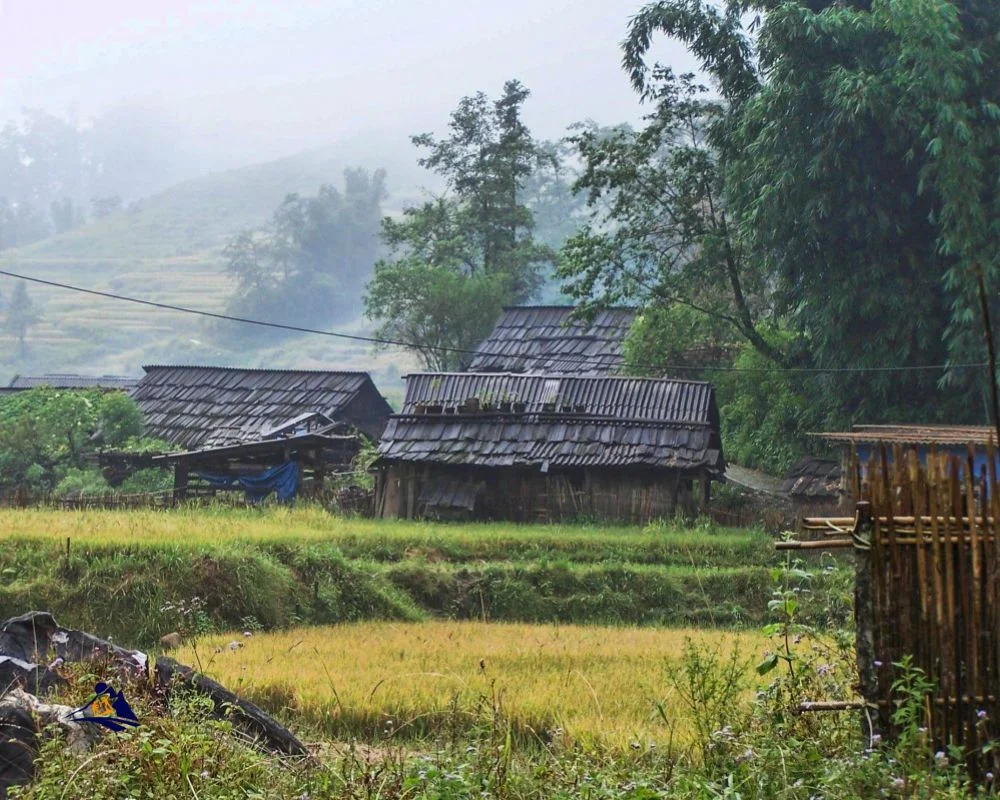
In general, it’s recommended to book your accommodation in advance, especially during peak season in February. You can find a variety of options on travel booking websites or through local tour operators.
It’s also worth noting that amenities and standards may vary between locations, so be sure to read reviews and ask for recommendations from other travelers or locals. In any case, the accommodations along the Ha Giang Loop are designed to cater to the needs of adventurous and curious travelers like you.
Safety Tips for the Ha Giang Loop Adventure
If you’re planning to embark on the Ha Giang motorbike loop tour in February, it’s essential to prioritize safety to ensure a smooth and enjoyable journey. Here are some tips to keep in mind:
- Choose a reliable motorbike: Make sure to rent a well-maintained motorbike from a reputable agency, with brakes and lights functioning properly.
- Wear appropriate gear: Protect yourself from potential accidents by wearing a helmet, gloves, and sturdy shoes or boots.
- Be mindful of the weather: Check the weather forecast before heading out, as February can bring fog, rain, and occasional icy conditions. Adjust your riding speed accordingly.
- Stay hydrated: Bring enough water with you to stay hydrated, especially during long rides.
- Stay on designated roads: Stick to the main roads and avoid venturing off into unpaved or unknown terrain.
- Observe traffic rules: Adhere to Vietnamese traffic rules and regulations to avoid accidents or getting pulled over by the police.
- Stay in touch: Ensure your phone is fully charged and keep emergency contacts handy in case of any mishaps.
- Consider a guide: If you’re not experienced in riding motorbikes or exploring the Ha Giang Loop, consider hiring a guide to lead the way and provide insights into local culture and attractions.

By following these safety tips, you can ensure a memorable and safe Ha Giang Loop adventure in February.
Exploring Ha Giang Beyond February
Your Ha Giang Loop adventure in February may have come to an end, but that doesn’t mean you’ve seen all that this stunning region has to offer. Ha Giang has something to offer visitors throughout the year, with each season bringing its unique beauty and charm.
During the spring (March-May), the hills are blanketed in colorful flowers, creating a truly magical landscape. This is also the season when local festivals and celebrations take place, offering an opportunity to immerse yourself in ethnic traditions and cultures.
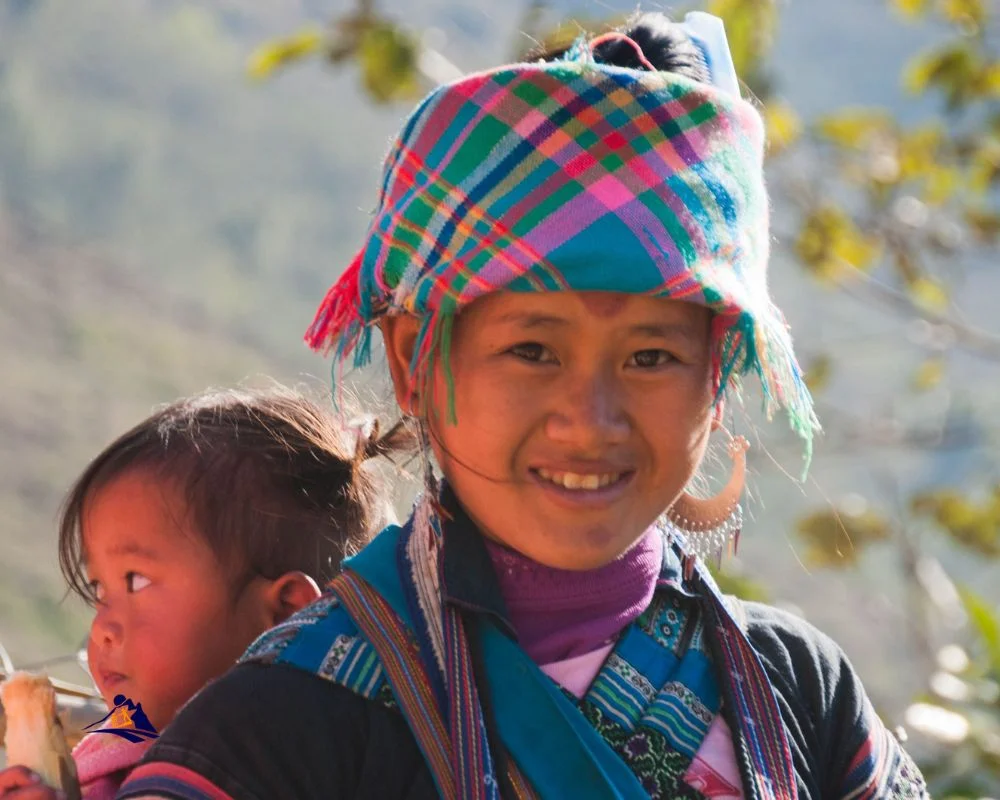
The summer (June-August) is ideal for those seeking a refreshing escape from the heat. The rivers and waterfalls come alive, providing adventurous activities such as swimming, rafting, and kayaking.
Autumn (September-November) is undoubtedly the most popular season for visitors. The weather is mild, and the rice terraces turn golden, offering a breathtaking panorama. This is also the time when the annual buckwheat flower festival takes place, attracting tourists from all over the world.
Winter (December- February) may not be the most comfortable time to visit due to the chilly temperatures, but it is perfect for those who love snow-capped mountains and pine forests. Winter is also a great time to explore Ha Giang’s indoor attractions, such as the ethnic museums and handicraft workshops.
Regardless of when you choose to visit Ha Giang, the region’s natural beauty, rich culture, and warm hospitality will leave a lasting impression. So start planning your next adventure and discover more of what Ha Giang has to offer beyond February.
- Recommended attractions:
- – Buckwheat Flower Festival (September-November)
- – Dong Van Sunday Market (year-round)
- – Vuong Palace (year-round)
- – Lung Cu Flag Tower (year-round)
- – The Village (March-May for blooming buckwheat flowers)
Conclusion
Embarking on the Ha Giang Loop adventure in February guarantees unforgettable experiences that will stay with you for a lifetime. The breathtaking landscapes, cultural encounters, and diverse cuisine make this journey a must-do for any adventurous traveler.
From the off-the-beaten-path destinations on day one to the scenic beauty of Ha Giang on day two, the cultural experiences on day three, and the unique journey towards the Chinese border on day four, each day offers new and exciting opportunities to explore, learn, and grow.
February is the perfect time to visit Ha Giang, with its cool and dry weather ideal for motorbiking and outdoor activities. Whether you choose to rent a motorbike and embark on the adventure by yourself or join a guided tour, there are plenty of options to suit your preferences and needs.
Make sure to pack appropriately, follow all safety precautions, and immerse yourself fully in the local culture and traditions. With a wide range of accommodation options and the opportunity to try thrilling activities such as trekking, caving, and rock climbing, the Ha Giang Loop is truly a paradise for adventure seekers.
So what are you waiting for? Book your travel arrangements now and prepare for a journey that will leave you breathless and inspired.
Ha Giang Loop February FAQ
What is the best time to explore the Ha Giang Loop?
February is the ideal time to embark on the Ha Giang Loop adventure.
What are the attractions along the Ha Giang Loop?
The Ha Giang Loop offers stunning landscapes, picturesque villages, and cultural experiences.
How should I plan my Ha Giang Loop itinerary?
We provide tips and guidance on planning the best Ha Giang Loop itinerary, including must-visit attractions and recommended routes for February travelers.
Can I rent a motorbike for the Ha Giang Loop?
Yes, motorbike rentals are available for the Ha Giang Loop adventure. We also offer information on guided tours and essential items to pack.
What can I expect on the first day of the Ha Giang Loop?
The first day of the Ha Giang Loop journey takes you to off-the-beaten-path destinations and unique experiences.
What will I see on the second day of the Ha Giang Loop?
The second day of the Ha Giang Loop adventure showcases the stunning landscapes and picturesque villages.
What cultural experiences can I have on the third day of the Ha Giang Loop?
The third day of the Ha Giang Loop journey allows you to immerse yourself in the local culture and interact with the communities.
Can I reach the Chinese border during the Ha Giang Loop?
Yes, the fourth day of the Ha Giang Loop adventure takes you toward the Chinese border and offers opportunities to explore neighboring regions.
